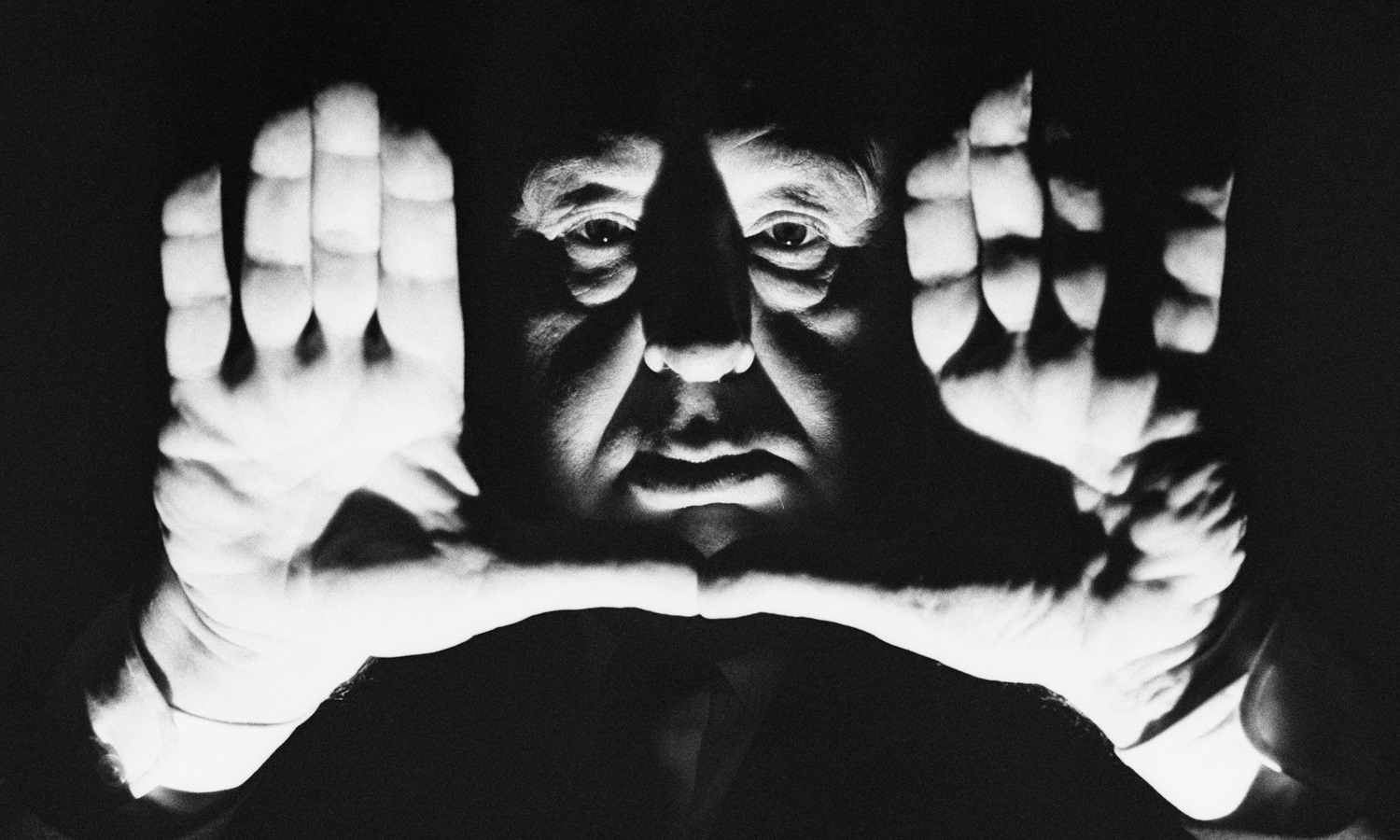Featuring films every Friday night, chosen by Resident Film Curator Marc Eliot!
Join us for our weekly "Art of Film" series in the Giant Screen Theater with New York Times best-selling author and Peoria Riverfront Museum Resident Film Curator Marc Eliot. A renowned film critic, scholar and historian, Marc Eliot is the author of more than two dozen books on pop culture and biographies about Hollywood icons.
Marc Eliot personally selects each of the films in the "Art of Film" series and provides in-depth virtual commentary for each film with an introduction to the film before screening and a full post-film analysis after screening.
FREE PARKING in the museum's parking garage off Water Street.
NEW SERIES!
HITCHCOCK REDUX: THE STRUGGLE WITHIN
Sep 3 | Blowup (Directed by Michelangelo Antonioni; For Mature Audiences Only)

Photo: Hitchcock framing a shot, by Tony Evans for the Sunday Telegraph, 1964.
Hitchcock Redux: The Struggle Within
Hitchcock is a director whose films we never tire of seeing. They are highly entertaining because they are easy to take. On their shimmering face, simple genre suspense flicks, but beneath even the most accessible Hitchcock lurks the deeper workings of the human psyche.
Hitchcock’s films are meditations on the Christian-Judeo-Freudian based complexities of the pursuit of love and the blurred border between the personification of good and evil. Brought up Calvinist, Hitch’s world is one of universal guilt, where everyone’s morally sound “good” side is in danger of being overtaken by its “evil dark other,” and it is that struggle that shapes so much of the great director’s work. Hitchcock remains one of the true blue (and relatively few) Hollywood directors ever to emerge from and rise above the bottom-dollar obsessions of the so-called dream factory to approach the level of authentic cinematic art.
His films may age but they don’t date. They remain timeless because of how they illustrate the clash between the moral high ground and the depraved lower depths through characters at war with their spiritual selves over what they should do (repression) and what they wish they could do (fantasy). To watch a Hitchcock film is to take a deep dip into the cinema’s emotional amusement park, the most popular rides being the various Ferris wheels of contemporary romance, the fear of commitment, the psychology of ambivalence, the torment of pleasure and the pleasure of torment.
It was once said that Hitchcock didn’t make fifty-two films; he made one film fifty-two times.
If John Ford was the master of sentimentality (How Green was my Valley), Chaplin the wit of the idealized underclass (Modern Times), Howard Hawks the action-packed activator of proto-feminist self-awareness (Bringing Up Baby), and Welles the avatar of expressionist ambivalence, Hitchcock was the master architect of the eternal moral struggle within, between good and evil. What guarantees his place in the Pantheon is that it is possible to watch his expressive thematic growth and development through the progression of his films (if indeed there is a difference between expression and theme, something auteurists have been debated forever. For what it’s worth, I fall on the side of no difference). Ultimately, to have the fullest understanding of Hitchcock, it is necessary to see all of his films, preferably in the order he made them. In this, our second cycle, we will see four of his films, earliest first, less than 10% of his total body of work, as a sampling of his artistic progress.
Industrial Hollywood, along with general film critics throughout the thirties, forties, fifties, and into the early sixties dismissed Hitchcock’s films (and Ford’s, Chaplin’s, Hawks’, and Welles’) as mere genre films, nothing more than “B” movies that were inferior to the pseudo-sophistication of “European cinema” and barely deserved even the condescending reviews they received. Auteurism helped elevate these great filmmakers to their proper place in the Pantheon.
Through the years, as people (critics and historians too) have been able to see more and more of Hitchcock’s films via revival houses, cable, and museums like Peoria Riverfront Museum, his reputation has steadily grown. Today he is widely regarded as one of the great artists of the twentieth century.
In this cycle, we take another view of North by Northwest, for those who missed it the last time, shown here as a companion piece to and a remake of 1942’s Saboteur, as well as Notorious, Dial M for Murder, Rear Window, Billy Wilder’s Double Indemnity and Michelangelo Antonioni’s Blowup.
See you on the big screen!
Marc Eliot
Resident Film Curator